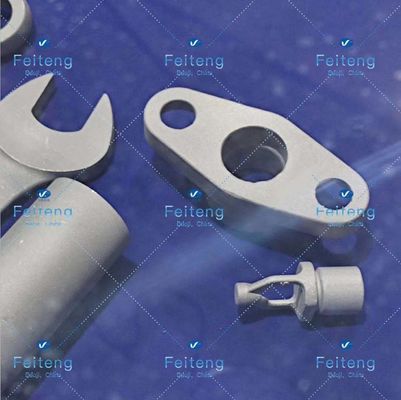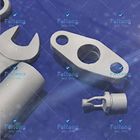GJB9001C-2017 ASTM B367 Gr2 Titanium Castings
| Place of Origin | Baoji, Shaanxi, China |
|---|---|
| Brand Name | Feiteng |
| Certification | GB/T19001-2016 idt ISO9001:2015 GJB9001C-2017 |
| Model Number | Titanium Casting |
| Minimum Order Quantity | To be negotiated |
| Price | To be negotiated |
| Packaging Details | Wooden case |
| Delivery Time | To be negotiated |
| Payment Terms | T/T |
| Supply Ability | To be negotiated |

Contact me for free samples and coupons.
Whatsapp:0086 18588475571
Wechat: 0086 18588475571
Skype: sales10@aixton.com
If you have any concern, we provide 24-hour online help.
x| Brand Name | Feiteng | Model Number | Titanium Casting |
|---|---|---|---|
| Certification | GB/T19001-2016 Idt ISO9001:2015 MANAGEMENT SYSTEM CNAS C034-M | Place Of Origin | Baoji, Shaanxi, China |
| Packaging | Wooden Case | ||
| Highlight | ASTM B367 Gr2 Titanium Castings,GJB9001C 2017 Titanium Castings,ASTM B367 Gr2 Ti Castings |
||
Titanium Casting ASTM B367 Gr2 Titanium Castings Titanium MateriaI
| Name | Titanium Casting |
| Grade | Gr2 |
| Material | Titanium |
| Standard | ASTM B367 |
| Packaging | Wooden case |
| Delivery |
Xi'an port, Beijing port, Shanghai port, Guangzhou port, Shenzhen port |
Cast of titanium material is a process of smelting and pouring titanium into castings under the condition of vacuum or protective gas. Titanium castings, mainly used in aerospace industry. The important parts are: engine compressor casing, intermediate casing, blade, hollow guide, inner ring, turbocharger impeller, bearing housing and support, aircraft support, silo, earpiece, short beam, flap slide, brake housing;Missile control module, tail fin, rocket rear head, common bottom, etc.;There are many classification methods for castings: according to the different metal materials used, they are divided into steel castings, cast iron castings, copper castings, aluminum castings, magnesium castings, zinc castings, titanium castings and so on.
Each type of casting can be further divided into different types according to its chemical composition or metallographic structure. For example, cast iron can be divided into gray cast iron, nodular cast iron, vernacular cast iron, malleable cast iron, alloy cast iron, etc. According to the different casting methods, castings can be divided into ordinary sand castings, metal castings, die castings, centrifugal castings, continuous casting parts, investment castings, ceramic castings, electroslag remelting castings, bimetal castings, etc. Among them, ordinary sand casting is the most used, accounting for about 80% of the total casting output. And aluminum, magnesium, zinc and other non-ferrous metal castings, most of them are die castings.
Features
Low Density and High Specification Strength
2. Excellent Corrosion Resistance
3. Good Resistance to Effect of Heat
4. Excellent Bearing to Cryogenics Property





